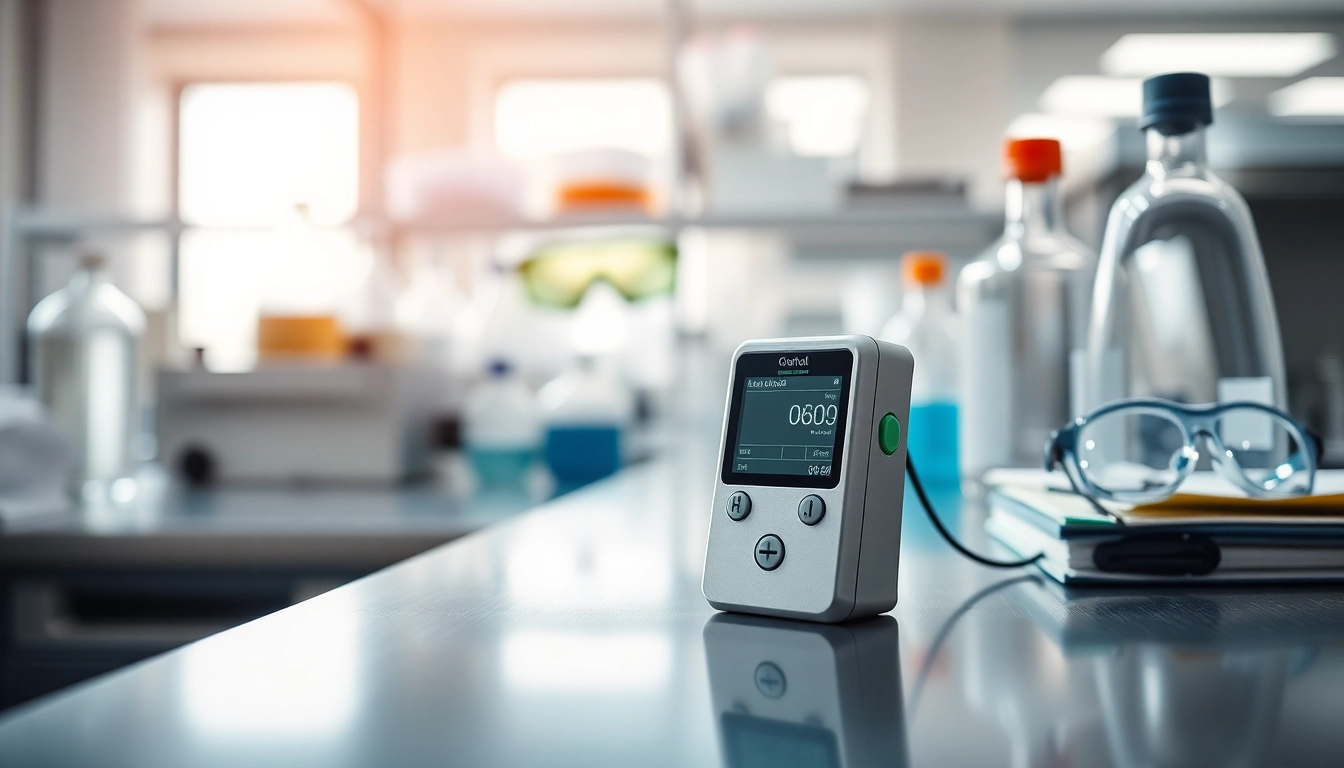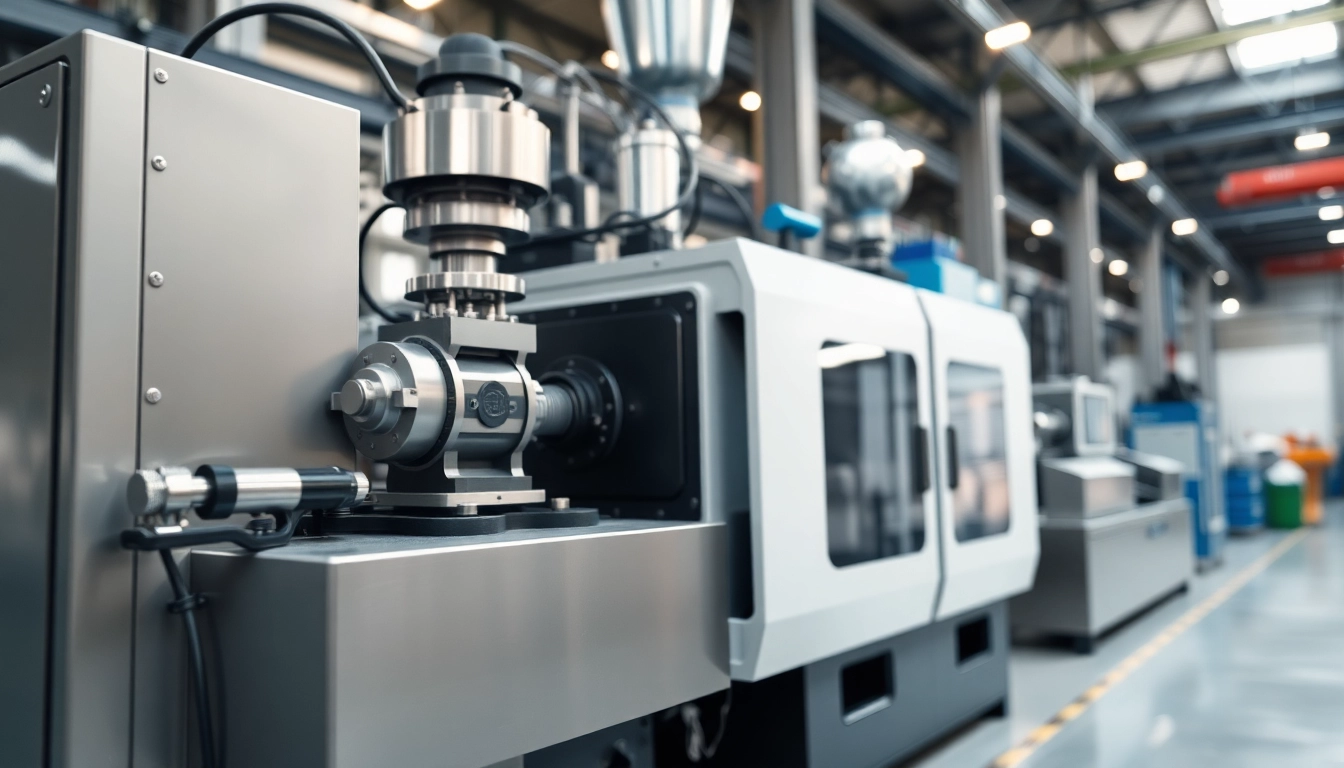Understanding Hydrogen Chloride and Its Hazards
What is Hydrogen Chloride?
Hydrogen chloride (HCl) is a colorless gas that has a pungent, irritating odor. It is a diatomic molecule consisting of one hydrogen atom and one chlorine atom. In its gaseous form, it has the ability to dissolve in water, forming hydrochloric acid, a highly corrosive solution commonly used in various industries, including chemical manufacturing, food processing, and metal cleaning. Due to its widespread industrial use, proper monitoring and detection of hydrogen chloride levels in the atmosphere become critical, especially in workspaces where exposure might occur. Employers and safety professionals must prioritize Hydrogen Chloride detection to ensure a safe working environment.
Health Risks and Safety Measures
Exposure to hydrogen chloride can pose significant health risks, ranging from mild irritation to severe injuries, depending on the concentration and duration of exposure. Short-term exposure to low concentrations can lead to symptoms such as coughing, throat irritation, and eye irritation. However, more severe exposure can result in chemical burns, respiratory distress, and even life-threatening conditions.
To mitigate health risks, several safety measures should be implemented:
- Personal Protective Equipment (PPE): Workers should be equipped with appropriate PPE, including gloves, goggles, and respirators to minimize exposure.
- Ventilation Systems: Adequate ventilation should be in place to prevent the accumulation of hydrogen chloride in restricted spaces.
- Training and Awareness: Regular safety training sessions should be conducted to educate staff on the hazards associated with hydrogen chloride and the importance of immediate detection.
- Emergency Procedures: Clear emergency response protocols should be established to aid in swift action during hydrogen chloride leaks or exposure incidents.
Regulatory Standards and Compliance
Regulation of hydrogen chloride is crucial in industries where it’s frequently used. Various governmental and international bodies, such as OSHA (Occupational Safety and Health Administration) and EPA (Environmental Protection Agency), set guidelines for permissible exposure limits (PEL) and permissible emissions. Compliance with these regulations is not only a legal obligation but also an ethical obligation to ensure worker safety. Regular audits and monitoring should be mandated to ensure adherence to these standards, including keeping updated materials safety data sheets (MSDS) that inform workers and emergency responders of the risks and safety measures associated with hydrogen chloride.
Methods of Hydrogen Chloride Detection
Types of Detection Instruments
Accurate detection of hydrogen chloride is essential in managing its risks effectively. Several types of detection instruments are commonly deployed to monitor levels of HCl in various environments:
- Electrochemical Sensors: These sensors work by generating a measurable electric current proportional to the concentration of hydrogen chloride in the air. They are reliable and suitable for instant readings.
- Infrared Sensors: Utilizing infrared light, these sensors detect the characteristic absorption spectrum of hydrogen chloride, allowing for non-contact measurement even in harsh environments.
- Photoionization Detectors (PID): These portable devices utilize UV light to ionize gas molecules. They are efficient for detecting low levels of hydrogen chloride and providing real-time data.
Comparison of Detection Techniques
When choosing a detection method for hydrogen chloride, it is crucial to assess several factors including sensitivity, specificity, response time, and cost. Below is a comparative analysis of the primary detection techniques:
| Detection Method | Sensitivity | Response Time | Cost |
|---|---|---|---|
| Electrochemical Sensors | High | Fast | Moderate |
| Infrared Sensors | Very High | Moderate | High |
| Photoionization Detectors | High | Very Fast | High |
Choosing the Right Method for Your Needs
The choice of detection technique should depend on the specific requirements of your environment. Factors to consider include:
- Environment: Whether it’s indoors or outdoors, ambient conditions can affect the sensor performance.
- Concentration Levels: Depending on the typical concentration levels present, different sensitivity may be required.
- Budget Constraints: Some high-tech solutions may offer better performance but come at higher costs, which may not fit all budgets.
- Regulatory Requirements: Compliance with specific regulations may dictate the type of detection systems mandated.
Assessing these factors holistically will ensure the selection of the most effective hydrogen chloride detection solution for your specific application.
Installation and Maintenance of Detection Systems
Steps for Proper Installation
The installation of hydrogen chloride detection systems must be conducted meticulously to ensure effectiveness. Key steps in proper installation include:
- Site Assessment: Conduct a thorough assessment of the site to identify potential sources of hydrogen chloride, areas of expected exposure, and environmental conditions.
- Optimal Placement: Install detection instruments in places where hydrogen chloride is likely to accumulate, such as near production areas, storage units, and waste discharge points.
- Power and Connectivity Setup: Ensure access to power sources and connectivity to monitoring systems for real-time data access and alerts.
- Calibration: Calibrate sensors according to manufacturer specifications to ensure accurate readings.
- Training for Personnel: Train designated personnel in the operation of the detection systems and standard operating procedures for when alarms trigger.
Routine Maintenance Tips
Routine maintenance is critical for optimal performance of hydrogen chloride detection systems. Here are essential maintenance tips:
- Regular Calibration: Sensors need to be calibrated periodically according to the manufacturer’s recommendations to maintain accurate readings.
- Inspection of Components: Routine checks for wear and tear on components can help identify issues before they lead to system failures.
- Battery Management: For portable detection devices, ensure that batteries are regularly charged and replaced as needed.
- Test Alarms: Regularly test and verify that alarm systems are functioning correctly to ensure timely notifications during detection.
Common Issues and Troubleshooting
Despite careful installation and maintenance, issues may arise with hydrogen chloride detection systems. Common problems include:
- False Alarms: These can occur due to environmental factors or sensor malfunctions. Regular recalibrations and environmental assessments can help reduce false positives.
- Slow Response Time: Regular checks and firmware updates can help ensure optimal response times.
- Power Failure: Implement backup systems such as battery backups or generators to maintain functionality during power outages.
Having a detailed troubleshooting guide can help operators quickly diagnose and rectify detection system issues, ensuring consistent monitoring.
Case Studies of Effective Hydrogen Chloride Detection
Success Stories from the Field
Many organizations have successfully implemented hydrogen chloride detection systems, improving workplace safety and compliance. For instance, a leading chemical manufacturer introduced electrochemical sensors in its facility, reducing incident reports related to HCl exposure by over 30% within the first year. By conducting regular training sessions and scheduled maintenance, they enhanced the reliability of their detection systems, ensuring their workforce remained safe.
Lessons Learned from Past Incidents
Learning from past incidents can provide valuable insights for improving detection methods. One notable incident occurred in a manufacturing plant where a failure to monitor hydrogen chloride levels resulted in an unintended exposure event. The subsequent investigation uncovered poor installation practices and lack of routine maintenance as critical failure points. This led to significant changes in both policy and practices throughout the organization, emphasizing the importance of integrated monitoring systems and continuous training.
Industry Best Practices
Adopting industry best practices can greatly enhance hydrogen chloride detection and management protocols. Key best practices include:
- Comprehensive Risk Assessments: Conducting thorough risk assessments prior to implementation provides a clear understanding of potential hazards.
- Multi-Layered Detection Systems: Utilizing various detection methods in tandem ensures a backup if one system fails, creating a fail-safe approach.
- Regular Audits: Conducting regular audits of the detection systems and safety protocols can help identify compliance gaps and areas for improvement.
- Continuous Employee Education: Investing in ongoing training ensures that personnel remain knowledgeable about the risks and prevention techniques associated with hydrogen chloride exposure.
Future Trends in Hydrogen Chloride Detection Technology
Innovations on the Horizon
The future of hydrogen chloride detection technology is promising, with several innovative trends on the horizon. Emerging technologies like nano-sensors are set to revolutionize detection methods by providing enhanced sensitivity and smaller, more adaptable systems. These cutting-edge solutions will lead to improved real-time monitoring and reporting capabilities that can significantly mitigate risks in various industrial settings.
Integrating Smart Technologies
The integration of smart technologies, including IoT devices and machine learning algorithms, is game-changing for hydrogen chloride detection. Smart sensors capable of real-time data analysis can provide actionable insights and predictive maintenance alerts, thus optimizing safety measures and decreasing downtime. Facilities will benefit from automated monitoring and alerts, ensuring quicker responses to hazardous conditions.
Impact of Regulatory Changes on Detection
As regulations surrounding hydrogen chloride become increasingly stringent, detection technologies will undoubtedly evolve. Companies must stay ahead of regulatory changes and prepare for the implementation of more rigorous safety standards. This may involve adopting more sophisticated detection instruments and incorporating advanced reporting capabilities to maintain compliance and protect workers.



